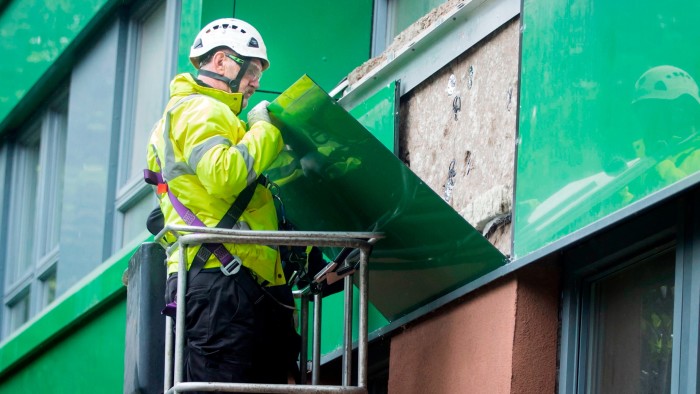Unlock the Editor’s Digest for free
Roula Khalaf, Editor of the FT, selects her favourite stories in this weekly newsletter.
Councils and low-cost housing providers say they could build more than 90,000 additional affordable homes over a decade if ministers included them in two multibillion-pound cladding funding schemes.
The National Housing Federation (NHF), which represents housing associations, and the Local Government Association have written to chancellor Rachel Reeves and Angela Rayner, the deputy prime minister, urging them to include affordable housing in the “Building Safety Fund” and “Cladding Safety Scheme”.
The programmes were designed to prevent leaseholders from shouldering the cost of removing unsafe cladding from tall buildings in the aftermath of the deadly Grenfell Tower fire.
But social housing providers can only get funding to cover the portion of their costs that could otherwise be passed on to leaseholders in buildings that contain both types of housing.
Housing associations say the money to fix cladding ultimately has to come out of their development budget, hampering new supply of badly needed affordable homes. About 1.3mn households are on waiting lists for a social home in England.
“These arrangements are iniquitous, because social housing tenants, through their rents, are paying for the mistakes of developers and contractors,” the letter said. “They wrongly prioritise tenure over risk, with the pace of remediation determined on the identity of the landlord rather than fire safety considerations.”
Nearly eight years after the Grenfell fire killed 72 people, thousands of tall buildings still have dangerous cladding and fire safety faults identified after the blaze.
The government has promised to speed up remediation, but faces a tension between the need to spend on cladding and its ambition to boost housebuilding to the highest levels in decades, especially social homes.
Ministers last week delayed by a year the launch of a levy on commercial housebuilders that raises funds for safety work, but which builders say will further limit their output.
The Ministry of Housing, Communities and Local Government said: “We recognise that social landlords face significant barriers to remediating building safety risks, including access to upfront funding.” It said a “long-term remediation strategy” would be published later this year.
The impact is greatest in London where there are more tall buildings. Fiona Fletcher-Smith, chair of the G15 group of large London housing associations, said. “This is a national crisis, but London is at the epicentre,” she said, adding that more than half of tall social housing blocks in the capital still needed work to fix their cladding.
The National Audit Office estimates that social landlords will need to spend £3.8bn to remediate their buildings. Covering that under the cladding funds would free up money to build 91,000 new homes, the NHF said.
The government has topped up the grant funding for new affordable homes before 2026 by £800mn, and promised at least £2bn for 2026-27 — ahead of a long-term funding announcement later this year.
Jennet Siebrits, head of UK research for real estate investment group CBRE, said the £2bn announced last week “marks a step in the right direction and should help resolve short-term uncertainty” concerning funding. But he added that the 18,000 homes it would support was only 1.2 per cent of the government’s overall housing target.




